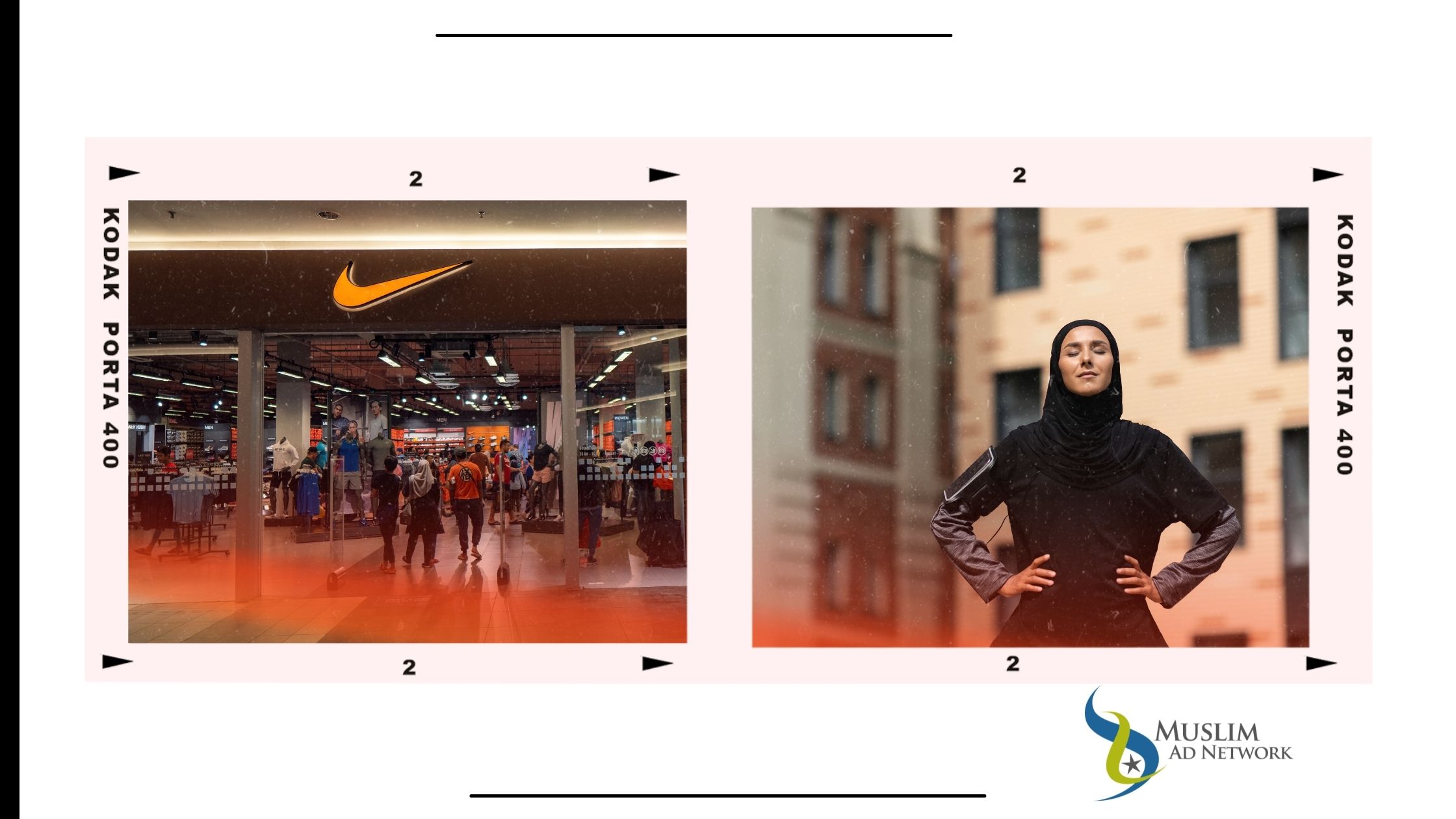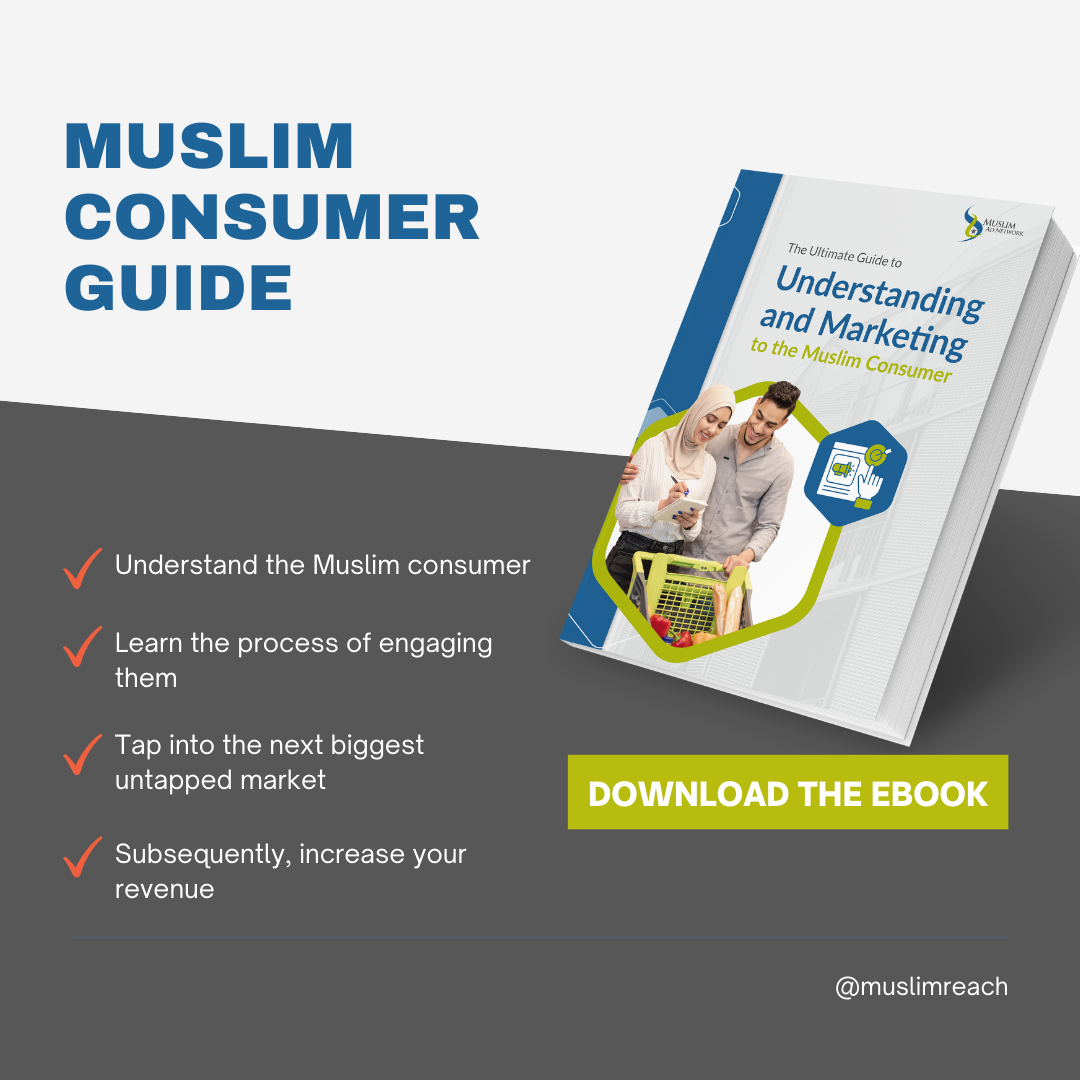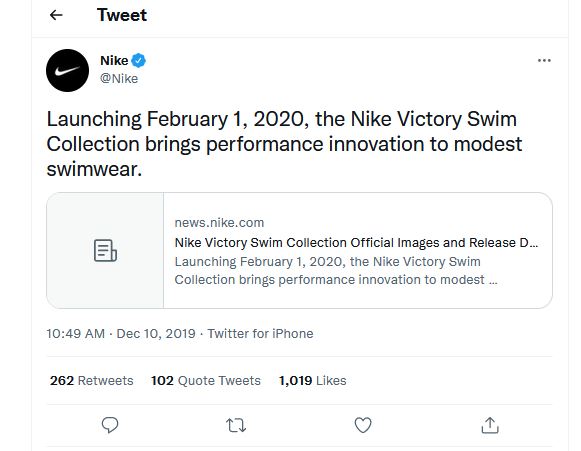
The Nike Pro Hijab
Nike took its first plunge into modest athletic gear in 2017 when it introduced its thirty-five-dollar Pro Hijab, a stretchy, breathable head covering with a firm seal around the face. By doing so, Nike became the first major sporting apparel brand to offer a performance head covering for Muslim women.
Nike aimed to ensure that women do not encounter any barriers in their sporting lives and to inspire young women to take on an active life.
After the launch of the Pro Hijab, UAE female weightlifter Amna Al Haddad, mentioned that:
Nike truly cares to cater for all kinds of athletes and their needs – as such Nike took notice of the rising number of covered Muslim athletes through stories like mine and many others.
Nike may have been the first major brand to take a plunge into modest athletic gear but smaller businesses and brands – having seen a gap in the market and the huge demand – had already started designing activewear for Muslim women.
In 2016, for instance, Hummel designed jerseys for Afghanistan’s women’s football team incorporating a built-in hijab. Capsters, at the time, was the self-proclaimed “world-leading brand in sport hijabs,” and offered a full line-up of head coverings for land and water sports.
The Pro Hijab in the NBA
Remarkably, Nike has become an inspiration for many brands and organizations offering modest sportswear collections to their consumers. Toronto Raptors is just one of them.
Toronto Raptors, the only Canadian team to compete in the National Basketball Association (NBA), produced a branded sports hijab as part of their “inclusivity initiative” program.
Maple Leaf Sports and Entertainment, the owner of the Canadian team that won the first NBA league championship in team history in the 2018 – 2019 season, announced that the idea to produce branded hijabs was taken after the playoffs.
The company’s Marketing Director, Jerry Ferguson, said the decision was inspired by a group of Muslim women in the Toronto area who get together to play basketball every Sunday and advocated for Muslim women to participate in sports.
The Toronto Raptors are taking steps to be more fan-inclusive with the unveiling of their officially branded sports hijab with this initiative.
Amreen Kadwa, the founder of Hijabi Ballers, said that Toronto is a multicultural and, therefore, ideal place for such a plan and they welcome the decision.
Before we move further, make sure you download The Ultimate Guide to Understanding and Marketing to the Muslim Consumer. Your brand’s guide on breaking into one of the fastest-growing untapped consumer markets in the world.

The Nike Victory Swim Collection
While Muslim women defied a ban to swim in burkinis at French pools, instated in 2016, Nike announced a new swimwear line designed for women who wear hijab on the 10th of December 2019 to be launched in 2020. This followed Nike’s Pro Hijab which was announced in 2017.

Nike’s collection includes the Nike Victory Full-Coverage Swimsuit, a loose, two-layer tunic with an attached hoodie, paired with matching pants. The hoodie acts as a hijab for Muslim women.
Along with this, Nike offers separate swim options:
- the Nike Victory Swim Hijab,
- the Nike Victory Swim Tunic Top,
- and the Nike Victory Swim Leggings.
According to The Detroit Free Press Nike stated:
Existing products were lacking in either coverage or functionality, athletes shared, leaving them feeling weighed down by baggy garments, battling drag instead of striving toward personal bests or worrying about whether their hijabs and coverings would remain in place.
The Birth of Nike’s Victory Swim Collection
Back in 2018, a group of Nike designers went on a global research trip. At swimming pools in Southeast Asia, the designers noticed that kids were frolicking in the water while their mothers hovered at the pool’s edge with heavy garments covering their bodies.
They noticed a similar scenario at the oceanside where adult women would only go into the water up to their thighs. Martha Moore, a Nike creative director in charge of swimwear explains:
I remember the team going, ‘Why aren’t the women in the water?
When the team went to Australia, lifeguards at a beach in Victoria told the Nike team that they worried that Muslim women swimming in heavy garb posed a drowning risk.
Ibtihaj Muhammad, an Olympic medalist in fencing, once stated to German news outlet DW that because of modesty concerns and a lack of obvious swimwear options, “a lot of Muslim girls never learn how to swim,” and that she learned to swim in her family’s back-yard swimming pool. She mentions that it’s the only reason why she knows how to swim.
The Nike designers then visited the Muslim Educational Trust, a school and community center in Beaverton, Oregon.
Mona Almadhoun, the school’s swimming instructor, explained to the Nike team that she learned to swim wearing knee-length shorts and a tank top in women-only pools.
Explaining the situation at her workplace she said that her students have their lessons during female-only hours in the community center’s indoor pool. However, “without a full-body solution, the girls are unable to field a swim team that could compete, for instance, in a civic league, as the girls’ basketball team does”.
Martha Moore, Nike Creative Director, said in a public statement.
The more we listened, the more possibility we saw to serve female athletes in new dimensions. We’re excited to inspire more women to see themselves in sport by thinking creatively and designing inclusively.
Get weekly insights into the Muslim market and trends. Subscribe to the Muslim Ad Network newsletter!
